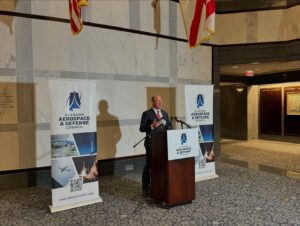Bradley Byrne: Choosing greatness

Last week, President Donald Trump gave the State of the Union address to the nation. I can say that in all my time in Washington, this was the best State of the Union I have had the honor of attending, and it seems most Americans agree. The President’s message was clear: if we stop with the political games and focus on solutions, American Greatness knows no bounds. By supporting President Trump’s clear and bold agenda, the American people will be stronger, safer, and more prosperous. He began by charging us to choose greatness in all that we do as lawmakers and as Americans. The guests the President and First Lady invited to the speech – including war heroes of World War II, relatives of victims of illegal immigration, and those who suffered from drug abuse – were expertly woven throughout the address to demonstrate the greatness that resides in our country. It takes these reminders of our greatness to underscore the need to come together to work on issues that matter most to the American people. Most notably, President Trump again outlined a commonsense strategy to secure our border. After decades of inaction by both parties, it is time we finally fix our broken immigration system, restore the rule of law, and keep the American people safe. He also outlined many issues important to Alabama. From strengthening our military to expanding rural broadband to lowering prescription drug costs, under President Trump’s agenda the people of Alabama stand to benefit, and our state will become even stronger. I appreciated the President’s call to rebuild American infrastructure. As we know in Alabama, the need for a stronger infrastructure system is vitally important to the overall success of our economy. With better roads, bridges, and waterways, we can unlock the extraordinary potential of our economic future. Rural broadband access is something that folks throughout the state will benefit from. People in rural areas deserve the same economic opportunities as those in urban areas when it comes to Internet access, and I will continue to advocate for greater access to rural broadband in any infrastructure bill put forward by Congress. Similarly, President Trump is dedicated to the American workforce, something Congress echoed last year through a number of laws to protect workers and. In the same vein, as the President mentioned, lowering the cost of healthcare and prescription drugs will benefit our workforce as well. With month after month of continued growth and positive economic news, it is clear that our conservative policies continue to pay off. I was thrilled President Trump mentioned the importance of protecting the unborn in his speech. As he said, “Let us reaffirm a fundamental truth: all children — born and unborn — are made in the holy image of God.” I couldn’t agree more. Lastly, President Trump’s call for protecting America’s national security in conjunction with safe and legal immigration is a commonsense approach we as a nation can get behind. Border security is national security. It only makes sense that we should advocate for greater national security and strong borders. Recently, Democrats have obstructed what is best for the American people: opposing border security measures, supporting infanticide, and proposing ill-thought-out and costly plans for our environment. It is time to stop with the politics of resistance and instead focus on realistic solutions to the problems facing our country. President Trump is right when he said that great bipartisan achievements in this Congress are possible, especially when we rally behind a commonsense agenda building American Greatness. Let’s get it done. • • • Bradley Byrne is a member of U.S. Congress representing Alabama’s 1st Congressional District.
5 takeaways from Donald Trump’s State of the Union speech
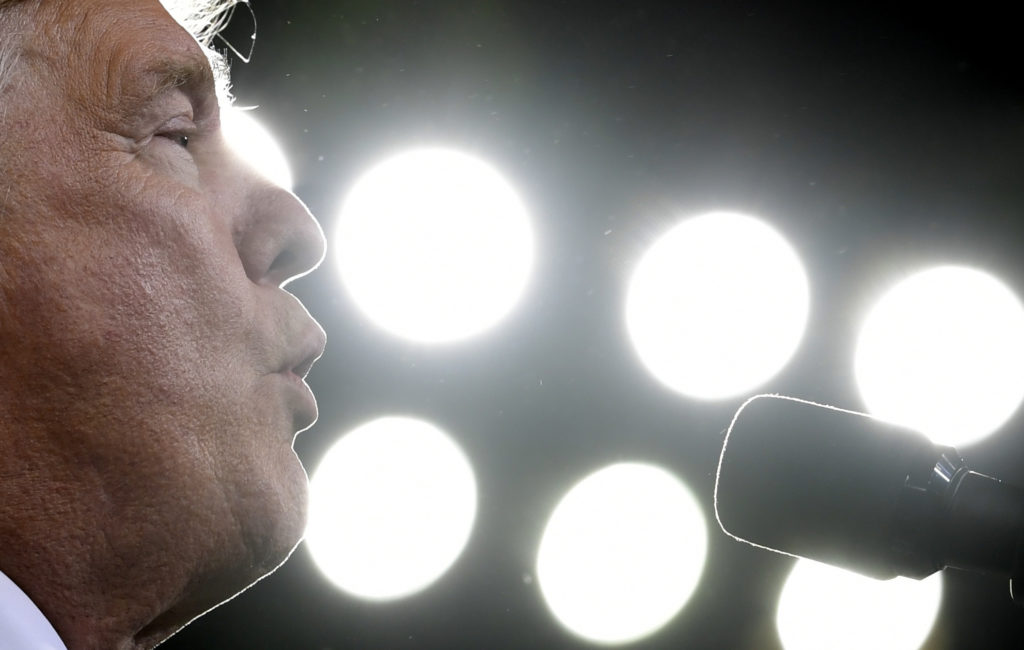
President Donald Trump delivered his second State of the Union speech Tuesday night, calling on Democrats and Republicans to work together and making only brief reference to the rancor that has dominated his presidency. Five key takeaways from his remarks: HE’S NOT BUDGING ON THE WALL “I will get it built,” he declared in his Tuesday evening speech. Addressing a joint session of lawmakers, Trump yet again hammered his now-familiar case for building a wall along the U.S.-Mexico border, insisting the situation represents a crisis that demands a physical barrier. But the president outlined no plan or new strategy for convincing Congress to approve money to build the wall. He issued a broad call for all sides to “work together, compromise, and reach a deal that will truly make America safe.” Trump notably made no reference to his continued to threat to circumvent Congress by declaring a national emergency if lawmakers refuse to give him the billions of dollars he’s demanding. The White Housed decided the speech was an inappropriate venue for such an announcement, especially after Trump said he’d allow congressional negotiators to run out a three-week clock that expires on Feb. 15 before taking any action. He has all but dismissed their efforts. THE HOUSE WAS IN ORDER Would they boo? Hiss? Jeer? With Democrats now in charge of the House and amid a bitter border wall battle that led to the longest government shutdown in the nation’s history, the White House was bracing for a less-than-friendly reception from those gathered in the House. Instead, the 82-minute speech was punctuated by lighthearted moments, including when lawmakers from both parties sang a spontaneous rendition of “Happy Birthday” to Judah Samet, a member of the Tree of Life Synagogue in Pittsburgh who survived a shooting that killed 11 people in October. Trump joked that the lawmakers wouldn’t break into song for him. The president also prompted cheers from the freshmen female House Democrats when he touted the number of new jobs created that women have filled. The women — dressed in white in honor of early 20th-century suffragettes — stood on their feet, with one raising her hands in the air in a “raise the roof” motion. Trump seemed taken back by the outbursts. “You weren’t supposed to do that,” he said before congratulating all the women who hold seats in Congress. The women jumped back up and high-fived each other, chanting “U-S-A!” SHUTDOWN? WHAT SHUTDOWN? Trump made no reference to the 35-day government shutdown that rocked the nation’s capital, leaving hundreds of thousands of workers without pay and freezing many government services the first month of the year. It was a notable omission from a president who had once said that he would be proud to own the shutdown — and came just 10 days before the government is set to run out of money again. Trump did note that Congress “has 10 days left to pass a bill that will fund our government, protect our homeland, and secure our southern border.” But he didn’t mention the funding deadline. It was a different story for Stacey Abrams, the Georgia Democrat who delivered her party’s response to Trump and spoke about how she’d joined volunteers to distribute meals to furloughed federal workers during the shutdown. “Making their livelihoods a pawn for political games,” she said, “is a disgrace.” AN APPEAL TO THE BASE As he does often in his toughest political moments, Trump tried to rally the Christian conservative voters who have proven to be some of his most loyal backers. He seized upon recent controversies surrounding “late-term abortions” and warned against legislation that he claimed “would allow a baby to be ripped from the mother’s womb moments before birth.” “These are living, feeling, beautiful babies who will never get the chance to share their love and dreams with the world,” he said, calling on Congress to pass legislation that would limit abortion rights. Trump also singled out embattled Democratic Virginia Gov. Ralph Northam by title, though not by name — claiming he would “execute a baby after birth.” Northam in an interview last week defended, in rare occasions, the practice of third-trimester abortions. He has since been under fire for a photograph on his medical school yearbook page featuring a person in blackface standing next to a person wearing a Ku Klux Klan outfit. He denies he’s in the photo and rejecting calls for his resignation. A FEW SWIPES AT DEMOCRATS Even as he called for a new age of bipartisanship and urged lawmakers to “govern not as two parties, but as one nation,” Trump couldn’t help but take few digs at Democrats, including the “resistance” movement in defiance of his presidency. “We must reject the politics of revenge, resistance and retribution — and embrace the boundless potential of cooperation, compromise and the common good,” Trump said at one point. Later he touted an “economic miracle” taking place across the country that he said could only be stopped by “foolish wars, politics, or ridiculous partisan investigations.” As for the new wave of socialist fervor in the Democratic Party, Trump declared, “Tonight, we renew our resolve that America will never be a socialist country.”
Donald Trump calls for end of resistance politics in State of Union
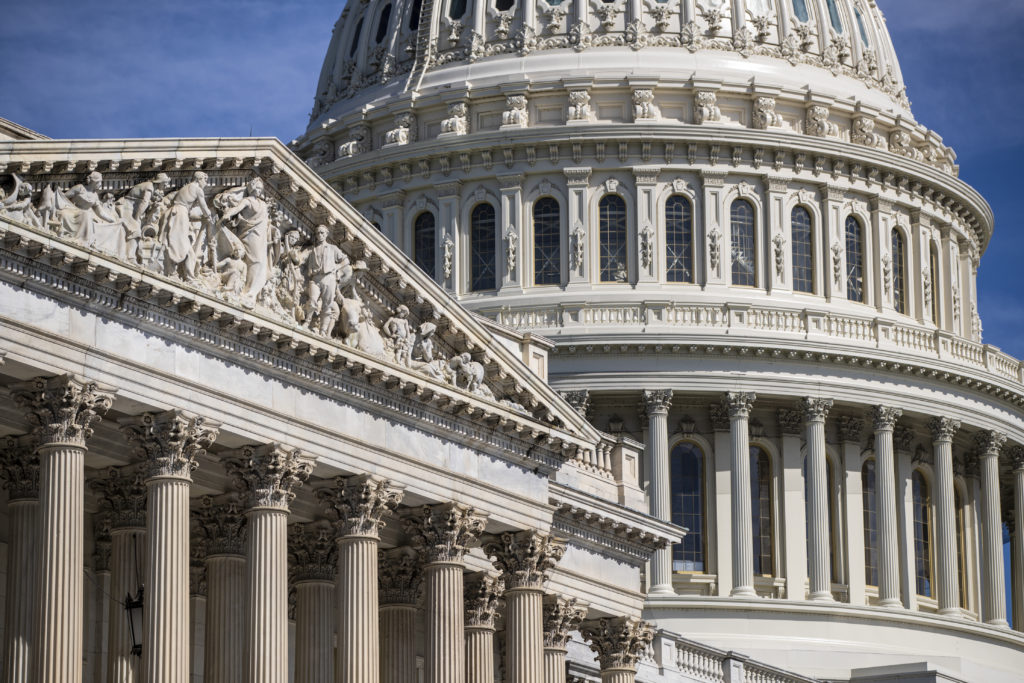
Facing a divided Congress for the first time, President Donald Trump on Tuesday called on Washington to reject “the politics of revenge, resistance and retribution.” He warned emboldened Democrats that “ridiculous partisan investigations” into his administration and businesses could hamper a surging American economy. Trump’s appeals for bipartisanship in his State of the Union address clashed with the rancorous atmosphere he has helped cultivate in the nation’s capital — as well as the desire of most Democrats to block his agenda during his next two years in office. Their opposition was on vivid display as Democratic congresswomen in the audience formed a sea of white in a nod to early 20th-century suffragettes. Trump spoke at a critical moment in his presidency, staring down a two-year stretch that will determine whether he is re-elected or leaves office in defeat. His speech sought to shore up Republican support that had eroded slightly during the recent government shutdown and previewed a fresh defense against Democrats as they ready a round of investigations into every aspect of his administration. “If there is going to be peace and legislation, there cannot be war and investigation,” he declared. Lawmakers in the cavernous House chamber sat largely silent. Looming over the president’s address was a fast-approaching Feb. 15 deadline to fund the government and avoid another shutdown. Democrats have refused to acquiesce to his demands for a border wall, and Republicans are increasingly unwilling to shut down the government to help him fulfill his signature campaign pledge. Nor does the GOP support the president’s plan to declare a national emergency if Congress won’t fund the wall. Wary of publicly highlighting those intraparty divisions, Trump made no mention of an emergency declaration in his remarks, though he did offer a lengthy defense of his call for a border wall. But he delivered no ultimatums about what it would take for him to sign legislation to keep the government open. “I am asking you to defend our very dangerous southern border out of love and devotion to our fellow citizens and to our country,” he said. Trump devoted much of his speech to foreign policy, another area where Republicans have increasingly distanced themselves from the White House. He announced details of a second meeting with North Korea’s Kim Jong Un, outlining a summit on Feb. 27 and 28 in Vietnam. The two met last summer in Singapore, though that meeting only led to a vaguely worded commitment by the North to denuclearize. As he stood before lawmakers, the president was surrounded by symbols of his emboldened political opposition. House Speaker Nancy Pelosi, who was praised by Democrats for her hard-line negotiating during the shutdown, sat behind Trump as he spoke. And several senators running for president were also in the audience, including Sens. Kamala Harris of California and Cory Booker of New Jersey. Another Democratic star, Stacey Abrams, will deliver the party’s response to Trump. Abrams narrowly lost her bid in November to become America’s first black female governor, and party leaders are aggressively recruiting her to run for U.S. Senate from Georgia. In excerpts released ahead of Abrams’ remarks, she calls the shutdown a political stunt that “defied every tenet of fairness and abandoned not just our people, but our values.” Trump’s address amounted to an opening argument for his re-election campaign. Polls show he has work to do, with his approval rating falling to just 34 percent after the shutdown, according to a recent survey conducted by The Associated Press-NORC Center for Public Affairs Research. One bright spot for the president has been the economy, which has added jobs for 100 straight months. He said the U.S. has “the hottest economy anywhere in the world.” He said, “The only thing that can stop it are foolish wars, politics or ridiculous partisan investigations” an apparent swipe at the special counsel investigation into ties between Russia and Trump’s 2016 campaign, as well as the upcoming congressional investigations. The diverse Democratic caucus, which includes a bevy of women, sat silently for much of Trump’s speech. But they leapt to their feet when he noted there are “more women in the workforce than ever before.” The increase is due to population growth — and not something Trump can credit to any of his policies. Turning to foreign policy, another area where Republicans have increasingly been willing to distance themselves from the president, Trump defended his decisions to withdraw U.S. troops from Syria and Afghanistan. “Great nations do not fight endless wars,” he said, adding that the U.S. is working with allies to “destroy the remnants” of the Islamic State group and that he has “accelerated” efforts to reach a settlement in Afghanistan. IS militants have lost territory since Trump’s surprise announcement in December that he was pulling U.S. forces out, but military officials warn the fighters could regroup within six months to a year of the Americans leaving. Several leading GOP lawmakers have sharply criticized his plans to withdraw from Syria, as well as from Afghanistan. Trump’s guests for the speech include Anna Marie Johnson, a woman whose life sentence for drug offenses was commuted by the president, and Joshua Trump, a sixth-grade student from Wilmington, Delaware, who has been bullied over his last name. They sat with first lady Melania Trump during the address. Republished with permission from the Associated Press
Alabama lawmakers, groups respond to Donald Trump’s State of the Union speech

President Donald Trump delivered his second State of the Union address Tuesday night ending with a call for unity. Here’s what Alabama lawmakers and groups had to say about the President’s address: Sen. Richard Shelby: President Trump outlined a policy agenda that both parties can work together to achieve. During his first two years in office, the President has delivered on many promises to the American people, including signing historic tax reform into law, creating one of the strongest economies I have seen in my lifetime, and focusing on vital infrastructure projects. While huge strides were made to address our nation’s most critical issues last Congress, I applaud President Trump’s dedication to solve the challenges still facing us today. It is imperative that we work to put our political disagreements aside in order to secure our borders with a comprehensive solution. As Chairman of the Appropriations Committee, I will continue to work with my colleagues on both sides of the aisle to find common ground on this critical issue. 1st District U.S. Rep. Bradley Byrne: Tonight, President Trump’s message was clear: if we stop with the political games and focus on solutions, American Greatness knows no bounds. By supporting the President’s clear and bold agenda, the American people will be stronger, safer, and more prosperous. …It is time to stop with the politics of resistance and act on these critically important issues. President Trump is right when he said that great bipartisan achievements in this Congress are possible, especially when we rally behind a commonsense agenda building American Greatness. Let’s get it done. 2nd District U.S. Rep. Martha Roby: In his second State of the Union address, President Trump highlighted the economic success hardworking Americans are experiencing thanks to the implementation of pro-growth policies, including the historic tax reform overhaul. I was also pleased to hear more about his plan to work with Congress to reinvigorate our badly aging infrastructure, strengthen our military, bolster our national security efforts, improve care for veterans, and defend the unborn. In addition, President Trump laid out his vision for our country’s future as it relates to enhancing border security and finally addressing our serious illegal immigration problem. Now, with a divided Congress, I was encouraged by his remarks about the importance of bipartisanship and working together to get our job done. I am eager to continue working with the Administration and my colleagues in Congress to deliver the results that the American people and Alabama’s Second District deserve. 3rd District U.S. Rep. Mike Rogers: Tonight, President Trump reaffirmed in his speech what makes our country great. His vision for America is attainable if we all work together and his eloquent call for unity will only make our nation stronger. I look forward to continuing to work with President Trump to build an even stronger economy, ensure our national security remains a top priority and secure our Southwest border with Mexico 4th District U.S. Rep. Robert Aderholt: As the President pointed out, the state of our Union is indeed strong. The economy is growing at an all-time high and unemployment is near record lows. And on the world stage, America is once again showing its strength. President Trump is not only working to defeat ISIS, but is also working to finally end the nuclear threat from North Korea. President Trump is getting so much pushback because he has forced Washington bureaucrats out of their comfort zone. Democrats, and even some Republicans, want to stick to the status quo, but that is not how you achieve results for all Americans. 5th District U.S. Rep. Mo Brooks: President Trump did an excellent job of explaining why we must secure America’s porous southern border. Too many Americans have lost their lives and their jobs. Too many Americans have had their wages suppressed. Too many Americans are being forced to pay higher taxes to support welfare for illegal alien families. In short, President Trump laid bare for all to see the betrayal of American families by Democrats who care more about illegal aliens than Americans. Whether the focus was on economic prosperity, free enterprise versus socialism, international relations, health care, national security, or the promise of America, President Trump hit the game-winning grand slam, shot the game-winning three point shot, and scored the game-winning touchdown. In sum, President Trump reminded us of how great America is and how proud we should be to be Americans. 6th District U.S. Rep. Gary Palmer: The President’s theme tonight of choosing greatness was what I think the nation needed to hear. He made it clear that we have a choice—we can choose to continue to pursue agendas that will weaken us, or we can choose an agenda that will unite us and ensure a bright and secure future for America. … I hope my Democratic colleagues will heed President Trump’s words tonight and return to this bipartisan approach that he has encouraged. He summed it up well tonight when he said, ‘Together, we can break decades of political stalemate. We can bridge old divisions, heal old wounds, build new coalitions, forge new solutions, and unlock the extraordinary promise of America’s future. The decision is ours to make 7th District U.S. Rep. Terri Sewell: The President’s promises of bipartisanship and unity tonight ring hollow. Actions speak louder than words. Over and over, the Trump administration has pursued divisive and destructive policies that have failed the middle class. The President has attacked people with pre-existing conditions and American’s right to health care. He has put corporate interests above those of working families by passing the GOP tax scam and denying federal workers their hard-earned paychecks during the longest government shutdown in U.S. history. Day in and day out, the President has sowed a culture of fear and falsehoods and put his own personal interests above those of the American people. Alabama Republican Party | Chairman Terry Lathan: President Trump showed true leadership through his incredible State of the Union Address. In calling for a renewal
Donald Trump calls for end of resistance politics in State of Union
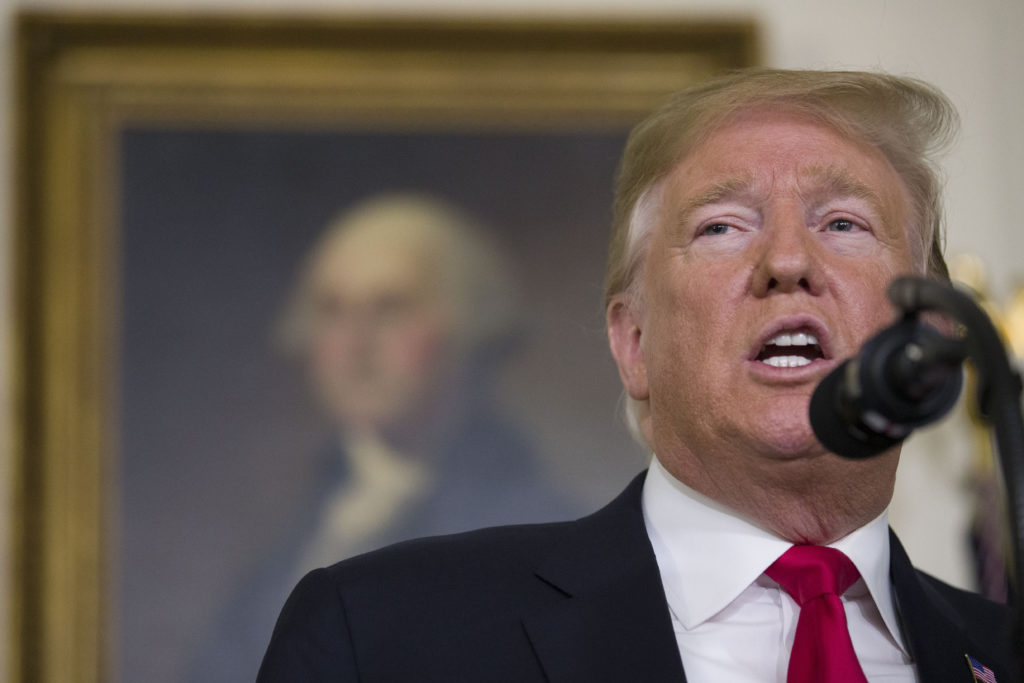
Facing a divided Congress for the first time, President Donald Trump on Tuesday called on Washington to reject “the politics of revenge, resistance and retribution.” He warned emboldened Democrats that “ridiculous partisan investigations” into his administration and businesses could hamper a surging American economy. Trump’s appeals for bipartisanship in his State of the Union address clashed with the rancorous atmosphere he has helped cultivate in the nation’s capital — as well as the desire of most Democrats to block his agenda during his next two years in office. Their opposition was on vivid display as Democratic congresswomen in the audience formed a sea of white in a nod to early 20th-century suffragettes. Trump spoke at a critical moment in his presidency, staring down a two-year stretch that will determine whether he is re-elected or leaves office in defeat. His speech sought to shore up Republican support that had eroded slightly during the recent government shutdown and previewed a fresh defense against Democrats as they ready a round of investigations into every aspect of his administration. “If there is going to be peace and legislation, there cannot be war and investigation,” he declared. Lawmakers in the cavernous House chamber sat largely silent. Looming over the president’s address was a fast-approaching Feb. 15 deadline to fund the government and avoid another shutdown. Democrats have refused to acquiesce to his demands for a border wall, and Republicans are increasingly unwilling to shut down the government to help him fulfill his signature campaign pledge. Nor does the GOP support the president’s plan to declare a national emergency if Congress won’t fund the wall. Wary of publicly highlighting those intraparty divisions, Trump made no mention of an emergency declaration in his remarks, though he did offer a lengthy defense of his call for a border wall. But he delivered no ultimatums about what it would take for him to sign legislation to keep the government open. “I am asking you to defend our very dangerous southern border out of love and devotion to our fellow citizens and to our country,” he said. Trump devoted much of his speech to foreign policy, another area where Republicans have increasingly distanced themselves from the White House. He announced details of a second meeting with North Korea’s Kim Jong Un, outlining a summit on Feb. 27 and 28 in Vietnam. The two met last summer in Singapore, though that meeting only led to a vaguely worded commitment by the North to denuclearize. As he stood before lawmakers, the president was surrounded by symbols of his emboldened political opposition. House Speaker Nancy Pelosi, who was praised by Democrats for her hard-line negotiating during the shutdown, sat behind Trump as he spoke. And several senators running for president were also in the audience, including Sens. Kamala Harris of California and Cory Booker of New Jersey. Another Democratic star, Stacey Abrams, will deliver the party’s response to Trump. Abrams narrowly lost her bid in November to become America’s first black female governor, and party leaders are aggressively recruiting her to run for U.S. Senate from Georgia. In excerpts released ahead of Abrams’ remarks, she calls the shutdown a political stunt that “defied every tenet of fairness and abandoned not just our people, but our values.” Trump’s address amounted to an opening argument for his re-election campaign. Polls show he has work to do, with his approval rating falling to just 34 percent after the shutdown, according to a recent survey conducted by The Associated Press-NORC Center for Public Affairs Research. One bright spot for the president has been the economy, which has added jobs for 100 straight months. He said the U.S. has “the hottest economy anywhere in the world.” He said, “The only thing that can stop it are foolish wars, politics or ridiculous partisan investigations” an apparent swipe at the special counsel investigation into ties between Russia and Trump’s 2016 campaign, as well as the upcoming congressional investigations. The diverse Democratic caucus, which includes a bevy of women, sat silently for much of Trump’s speech. But they leapt to their feet when he noted there are “more women in the workforce than ever before.” The increase is due to population growth — and not something Trump can credit to any of his policies. Turning to foreign policy, another area where Republicans have increasingly been willing to distance themselves from the president, Trump defended his decisions to withdraw U.S. troops from Syria and Afghanistan. “Great nations do not fight endless wars,” he said, adding that the U.S. is working with allies to “destroy the remnants” of the Islamic State group and that he has “accelerated” efforts to reach a settlement in Afghanistan. IS militants have lost territory since Trump’s surprise announcement in December that he was pulling U.S. forces out, but military officials warn the fighters could regroup within six months to a year of the Americans leaving. Several leading GOP lawmakers have sharply criticized his plans to withdraw from Syria, as well as from Afghanistan. Trump’s guests for the speech include Anna Marie Johnson, a woman whose life sentence for drug offenses was commuted by the president, and Joshua Trump, a sixth-grade student from Wilmington, Delaware, who has been bullied over his last name. They sat with first lady Melania Trump during the address. Republished with permission from the Associated Press
What to watch during Donald Trump’s State of the Union address
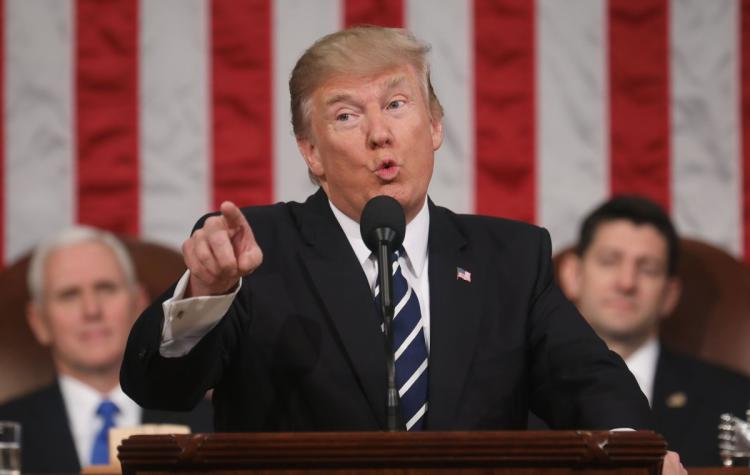
President Donald Trump, a uniter? That’s the approach advisers say Trump will take in his first State of the Union address delivered under divided government. A president who’s mocked everyone from women to the U.S. intelligence community, foreign leaders and members of Congress is expected to speak Tuesday night of setting aside hard feelings and moving forward. For an idea of how that goes over, keep an eye on House Speaker Nancy Pelosi, seated behind him and over his shoulder, and the record number of women and minorities who dot the audience after the November 2018 elections. And listen for how enthusiastically Republicans applaud Trump’s outreach. AMPED ATMOSPHERE Everything about the event, including the date, is framed by the longest government shutdown in history. Pelosi suggested Trump postpone the scheduled Jan. 29 speech until the government reopened. Trump, who commands the armed forces, then put off Pelosi’s trip overseas on a military plane. She then formally yanked the welcome mat by refusing to hold a vote to allow Trump to address a joint session of Congress. The tug of war ended Jan. 25, when Trump lifted the shutdown without getting new money for the wall he wants to build on the U.S.-Mexico border. Pelosi then re-invited Trump to deliver the address on Tuesday and he agreed. Trump has vowed to get his border wall and has threatened to declare a national emergency to pay for it without Congress’ approval. ___ TRUMP’S ENTRANCE The pomp begins the moment House Sergeant-at-Arms Paul Irving yells from the back of the chamber, “Madam Speaker, the president of the United States!” Trump will then walk down the center aisle flanked by Republican leaders, shaking hands with many of the lawmakers who grabbed seats earlier in the day in hopes of making it into photos and video with the president. Republicans will burst into raucous hoots and applause. Not likely to extend a hand to Trump: The star of the Democratic freshmen, Rep. Alexandria Ocasio-Cortez of New York. “But I’ll be there and I’ll be present to see and listen to what’s going on,” she told TMZ. ___ WHO’S IN THE ROOM It’s a rare moment when members of the three separate and co-equal branches of government meet under the same roof. The night’s key visual will be Pelosi sitting behind Trump along with Vice President Mike Pence. All 535 members of Congress are invited, along with members of Trump’s Cabinet and the justices of the Supreme Court, led by Chief Justice John Roberts. The balcony tells its own story. To the left, Trump will nod to first lady Melania Trump and the administration’s guests. Seated elsewhere in the gallery will be lawmakers’ invited guests, many chosen to send messages reinforcing each party’s agenda. This year the guests include people who have suffered because of the shutdown and those pushing for tougher immigration laws. ___ DESIGNATED SURVIVOR It’s not just a television show. By tradition, one Cabinet secretary is closeted away at a secure, undisclosed location to ensure continuity of government in case disaster strikes while government leaders attend the speech. Agriculture Secretary Sonny Perdue was last year’s “designated survivor.” But Trump’s choice this year could be limited by the number of “acting” secretaries in the Cabinet. Only Senate-confirmed secretaries (and natural-born citizens) in the line of succession to the presidency can assume control of government in a crisis. That means Acting Defense Secretary Patrick Shanahan, Acting Attorney General Matthew Whitaker, Acting Interior Secretary David Bernhardt and Transportation Secretary Elaine Chao can’t fill the role of designated survivor. Chao is a naturalized U.S. citizen who was born in Taiwan. ___ WHAT’S HAPPENING IN THE AUDIENCE Look for women on the Democratic side of the aisle wearing white, the color favored by early 20th century suffragettes and now worn by those who want Trump to easily spot his new opponents. Listen for boos, hisses or silence from the newly empowered Democratic side when Trump speaks. Note whether Trump can raise everyone’s gaze and hit feel-good themes that inspire both sides to applaud. For instance, who’s against “unity?” Both Trump and Georgia Democrat Stacey Abrams, who will deliver the rebuttal, have used that idea to preview their remarks. ___ DEMOCRATS RUNNING FOR PRESIDENT Nearly a dozen Democrats who dream of succeeding Trump serve in Congress. They will be sizing up the president and each other as well. Watch the body language among the would-be Democratic presidents: Who’s talking to whom, who gets or gives a hug or a kiss, whose heads are bowed in hushed conversation. Also watch their body language toward Trump. Cameras will be trolling the audience — and the presidential dreamers know it — to see if they can be caught responding with an eye roll or head shake. ___ ABRAMS AFTER WORDS Senate Democratic leader Chuck Schumer chose Abrams to deliver the rebuttal in a nod toward the black women who anchor the Democratic Party. Doing so elevates her among Democrats as the leaders woo Abrams to run for the Senate. Abrams also will provide a contrast with Trump, who has a history of making racially inflammatory remarks. Abrams is filling a role that for others has proven thankless and generated brutal reviews. Republican Sen. Marco Rubio’s lunge for a water bottle became a meme after he delivered his party’s response in 2013. Then-Louisiana Gov. Bobby Jindal, a Republican, was panned for being dull in 2009. Former New Jersey Gov. Chris Christie, appearing on “The Late Show with Stephen Colbert,” said he twice turned down offers to deliver the rebuttal. Why? “Because it sucks,” he said. … Follow Kellman and Superville on Twitter at twitter.com/APLaurieKellman and twitter.com/DSupervilleAP Republished with permission from the Associated Press
Terri Sewell invites widow of slain Alabama officer to attend State of the Union

The widow of a slain Alabama police officer is attending President Donald Trump’s State of the Union address as a guest of U.S. Rep. Terri Sewell. The Democratic lawmaker says Tiphanie Carter will join her at the speech Tuesday night. Carter is the wife of the late Wytasha Carter, a Birmingham police sergeant who was shot to death in the line of duty last month. Sewell tweeted Monday that Carter represents the best in her 7th District region. She says her colleagues need to hear his widow’s story to prevent gun violence. The 44-year-old Carter was killed as he and another officer investigated possible car break-ins Jan. 13. Two suspects have been arrested. Republished with permission from the Associated Press
Trump to call for unity, face skepticism in State of the Union

The White House says President Donald Trump will call for optimism and unity in Tuesday’s State of the Union address, using the moment to attempt a reset after two years of bitter partisanship and deeply personal attacks. But will anyone buy it? Skepticism will emanate from both sides of the aisle when Trump enters the House chamber for the primetime address to lawmakers and the nation. Democrats, emboldened after the midterm elections and the recent shutdown fight, see little evidence of a president willing to compromise. And even the president’s staunchest allies know that bipartisan rhetoric read off a teleprompter is usually undermined by scorching tweets and unpredictable policy maneuvers. Still, the fact that Trump’s advisers feel a need to try a different approach is a tacit acknowledgement that the president’s standing is weakened as he begins his third year in office. The shutdown left some Republicans frustrated over his insistence on a border wall, something they warned him the new Democratic House majority would not bend on. Trump’s approval rating during the shutdown dipped to 34 percent, down from 42 percent a month earlier, according to a recent survey conducted by The Associated Press-NORC Center for Public Affairs Research. White House counselor Kellyanne Conway said the president would use his address “to call for an end to the politics of resistance, retribution.” “He’s calling for cooperation,” she said, adding that Trump will point to examples of where this has happened on his watch. Officials said the president is also expected to highlight infrastructure, trade and prescription drug pricing as areas in which the parties could work together. But Washington’s most recent debate offered few signs of cooperation between Trump and Democrats. Under pressure from conservative backers, Trump refused to sign a government funding bill that did not include money for his long-sought border wall. With hundreds of thousands of Americans missing paychecks, Trump ultimately agreed to reopen the government for three weeks to allow negotiations on border security to continue. With the new Feb. 15 funding deadline looming, Trump is expected to use his address to outline his demands, which still include funding for a wall along the U.S.-Mexico border. He’s teased the possibility of declaring a national emergency to secure wall funding if Congress doesn’t act, though it appeared unlikely he would take that step Tuesday night. Advisers have also been reviewing options to secure some funding without making such a declaration. “You’ll hear the State of the Union, and then you’ll see what happens right after the State of the Union,” Trump told reporters. The president’s address marks the first time he is speaking before a Congress that is not fully under Republican control. House Speaker Nancy Pelosi, who won plaudits from Democrats for her hard-line negotiating tactics during the shutdown, will be seated behind the president — a visual reminder of Trump’s political opposition. In the audience will be several Democrats running to challenge Trump in 2020, including Sens. Kamala Harris of California, Cory Booker of New Jersey, Elizabeth Warren of Massachusetts and Kirsten Gillibrand of New York. Another Democratic star, Stacey Abrams, will deliver the party’s response to Trump. Abrams narrowly lost her bid in November to become Georgia’s first black governor, and party leaders are aggressively recruiting her to run for Senate. Senate Minority Leader Chuck Schumer previewed Democrats’ message for countering Trump, declaring Monday, “The number one reason the state of the union has such woes is the president.” While White House officials cautioned that Trump’s remarks were still being finalized, the president was expected to use some of his televised address to showcase a growing economy. Despite the shutdown, the U.S. economy added a robust 304,000 jobs in January, marking 100 straight months of job growth. That’s the longest such period on record. Trump and his top aides have also hinted that he is likely to use the address to announce a major milestone in the fight against the Islamic State group in Syria. Despite the objections of some advisers, Trump announced in December that he was withdrawing U.S. forces in Syria. In a weekend interview with CBS, Trump said efforts to defeat the IS group were “at 99 percent right now. We’ll be at 100.” U.S. officials say the Islamic State group now controls less than 10 square kilometers (3.9 square miles) of territory in Syria, an area smaller than New York’s Central Park. That’s down from an estimated 400 to 600 square kilometers (155 to 230 square miles) that the group held at the end of November before Trump announced the withdrawal, according to two officials who were not authorized to discuss the matter publicly and spoke on condition of anonymity. However, a Defense Department inspector general report released Monday said the Islamic State group “remains a potent force of battle-hardened and well-disciplined fighters that could likely resurge in Syria” absent continued counterterrorism pressure. According to the Pentagon, the group is still able to coordinate offensives and counteroffensives. Administration officials say the White House has also been weighing several “moonshot” goals for the State of the Union address. One that is expected to be announced is a new initiative aimed at ending transmissions of HIV by 2030. Trump’s guests for the speech include Anna Marie Johnson, a 63-year-old woman whose life sentence for drug offenses was commuted by the president, and Joshua Trump, a sixth-grade student from Wilmington, Delaware, who was allegedly bullied because of his last name. They will sit with first lady Melania Trump during the address. ___ Associated Press writers Zeke Miller, Darlene Superville, Matthew Lee and Lolita C. Baldor contributed to this report. ___ Follow Julie Pace at http://twitter.com/jpaceDC Republished with permission from the Associated Pressi
State of the Union among most sensitive security challenges

It’s one of the most sensitive security challenges in America: The State of the Union address puts the president, his Cabinet, members of Congress, military leaders, top diplomats and Supreme Court justices all in the same place at the same time for all the world to see. Protecting everyone requires months of planning and coordination involving multiple law enforcement agencies, led by the U.S. Secret Service. Thousands of officers work across agencies in ways seen and unseen. Security for the speech was in the spotlight during the partial government shutdown, when House Speaker Nancy Pelosi cited safety concerns as her reason for delaying President Donald Trump’s speech. But law enforcement officials said the shutdown would not have compromised security if the speech had gone forward as originally scheduled. Now the speech is set for Tuesday. The Secret Service is, well, secretive about its plans, though it provides some details: Long before the speech, a steering committee is formed to explore the best way to secure the event. The Secret Service works with U.S. military, parks and local police, Capitol police, emergency management experts and the FBI. There are 19 subcommittees on areas like crowd management, intelligence and counterterrorism, traffic and crisis. Each subcommittee contains experts across law enforcement. Teams run drills. Officials perform tabletop exercises, running through potential disasters and pore over the report from the previous year to see how they can improve. Analysts comb social media for signs of threatening behavior and monitor world events to help inform how security should be tailored for the event. The tradition and familiarity of the event is also the biggest security challenge; it’s basically the same every year, officials said. And there are only so many ways officials can vary traffic routes or arrivals and departures. “You have to be creative,” said Wes Schwark, assistant to the special agent in charge of the Dignitary Protective Division. “You try not to stick our head out in the same place twice.” On the day of the event, an operations center is set up at an undisclosed location where law enforcement officials scan social media, monitor traffic and protests, drones and other aircraft and communicate potential threats with agents in the field. “We don’t want the problem to be in the chamber, we want the problem to be as far away from the chamber as possible,” said Ken Valentine, special agent in charge of the Dignitary Protective Division, which is tasked with coordinating the event. “We’re trying to push that out so if there is an issue, we’re dealing with it as far away as possible.” The streets around the building are frozen and secured. The Capitol Plaza is locked down and those inside are limited from moving around the building. The president and his entourage typically gather in a room off the House floor to await their entrances to the House chamber. Metro stations are checked, counter-sniper teams with long-arm rifles perch on rooftops, bomb-sniffing dogs, uniformed officers and plainclothes agents patrol. Traffic is locked down. The House Chamber is swept randomly and consistently for explosives. “All of those are more traditional means of countering an attack, but they serve as a deterrent,” Valentine said. The biggest shift in recent history has been the prevalence of technology, both as a possible security concern and a tool. “It gives us a heads-up, or a warning when we are going to start engaging in something that maybe before would have been right up on us,” Schwark said on technology. “It allows us to start taking some type of action sooner.” Despite the heavy security, there is a traditional precaution in case of a disaster: At least one Cabinet member in the line of presidential succession, and at least one Supreme Court justice, stay away from the speech. “Given their public profile, National Special Security Events are potentially attractive targets for malicious actors who may seek to hurt attendees or incite fear into our way of life,” said Homeland Security Secretary Kirstjen Nielsen. “DHS, our component agencies and federal partners work tirelessly to secure the State of the Union.” In the end, Secret Service agents are trained to protect the president and do it every day, so shifting from working the South Lawn to the State of the Union isn’t much of a difference for them, officials said. “It’s just another day at work,” Valentine said. Republished with permission from the Associated Press
Stacey Abrams to give Democrats’ response to State of the Union
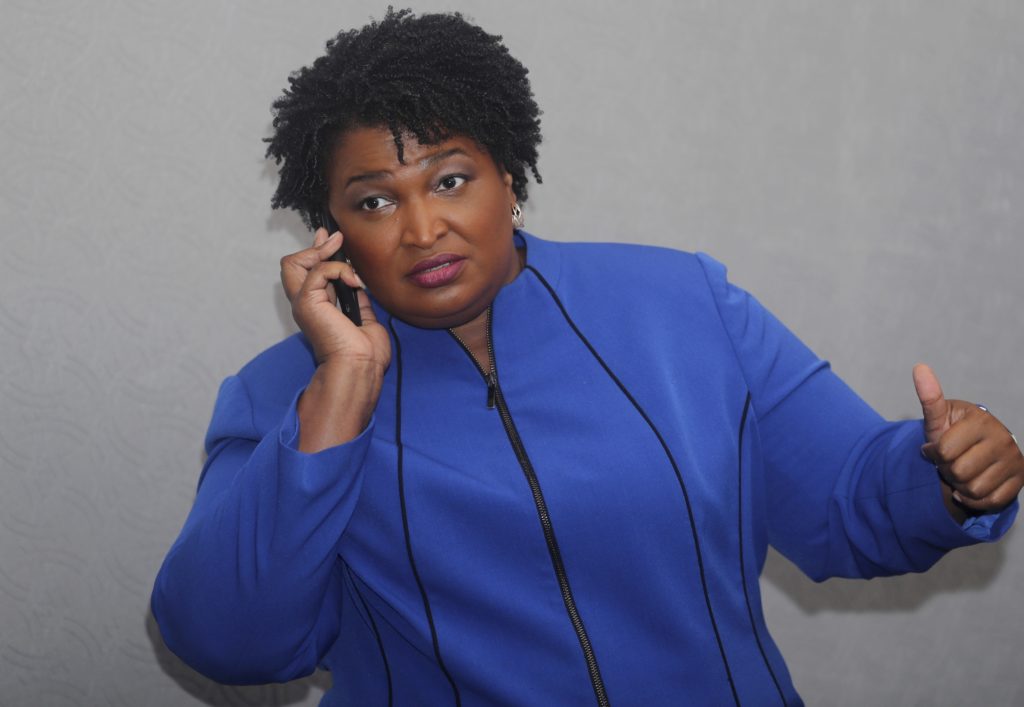
Stacey Abrams, the rising political star who marshaled the power of black female voters but narrowly lost the Georgia governor’s race, will deliver the Democratic response to President Donald Trump’s State of the Union address. Senate Minority Leader Chuck Schumer told reporters Tuesday that he asked Abrams three weeks ago to take on the role and “was very delighted when she agreed.” Abrams narrowly lost the 2018 race against Republican Brian Kemp after a protracted challenge over blocked votes. Senate Democrats have been urging her to mount a 2020 challenge to Republican Sen. David Perdue, who has emerged as one of Trump’s most outspoken allies on Capitol Hill. “She is just a great spokesperson. She is an incredible leader. She has led the charge for voting rights, which is at the root of just about everything else,” Schumer, D-N.Y., told reporters. “She knows what working people, the middle class, go through.” The role elevates Abrams in a party that’s looking to keep core supporters, such as black women who anchor the Democratic base, energized ahead of the 2020 congressional and presidential elections. Abrams’ travel and meeting schedule in recent weeks tells the story of how hotly Democrats have pursued her as their top choice to challenge Perdue: She’s been inundated with calls from Democratic Party leaders, including Schumer, House Speaker Nancy Pelosi and House campaign chief Sen. Catherine Cortez Masto. Abrams also met privately with presidential candidate Sen. Kamala Harris, members of the Congressional Black Caucus and Democratic House members from her state. Party officials see an Abrams candidacy as a promising scenario all around in 2020. Enthusiasm around her Senate run could drive up turnout that would also benefit a Democratic presidential candidate in the state, while the money that a White House campaign would bring to Georgia would help Abrams. For her part, Abrams has started a voting rights advocacy group but is also considering her own political future and looking to help other Democrats. She is expected to make a decision about the Senate race in coming months. The State of the Union response often serves as an audition of sorts for ambitious political figures looking to raise their profile. But it’s also frequently a thankless task, with brutal reviews. Republican Sen. Marco Rubio’s lunge for a water bottle became a meme after his response in 2013. Then-Louisiana Gov. Bobby Jindal was panned for being dull in 2009. In 1996, then-presidential candidate Bob Dole gave a less-than-boffo performance and was widely criticized for his delivery and the lighting. But for Abrams, the response is not an audition. She’s well-known in the U.S. for nearly winning the governor’s race and disputing the vote. A group backed by Abrams filed a federal lawsuit this month saying Georgia deprived many low-income people and minorities of their voting rights with Kemp, then secretary of state, overseeing the 2018 election. After a long dispute, Kemp won the governorship. Republished with permission from the Associated Press
Nancy Pelosi invites Donald Trump to give State of the Union on February 5

House Speaker Nancy Pelosi has issued a new invitation to President Donald Trump to give his State of the Union speech on Feb. 5. The formal letter Monday suggests Trump will reschedule the speech after it was postponed because of the partial government shutdown. Trump and Congress reached a deal Friday to reopen the government, which had been Pelosi’s condition for allowing Trump to speak. Pelosi said in her letter that she and Trump spoke Monday and agreed on the new date. She wrote: “In our conversation today, we agreed on Feb. 5.” The House and Senate still must pass a resolution officially inviting Trump to speak to a joint session of Congress. Republished with permission from the Associated Press
Ending showdown with Nancy Pelosi, Donald Trump postpones State of Union
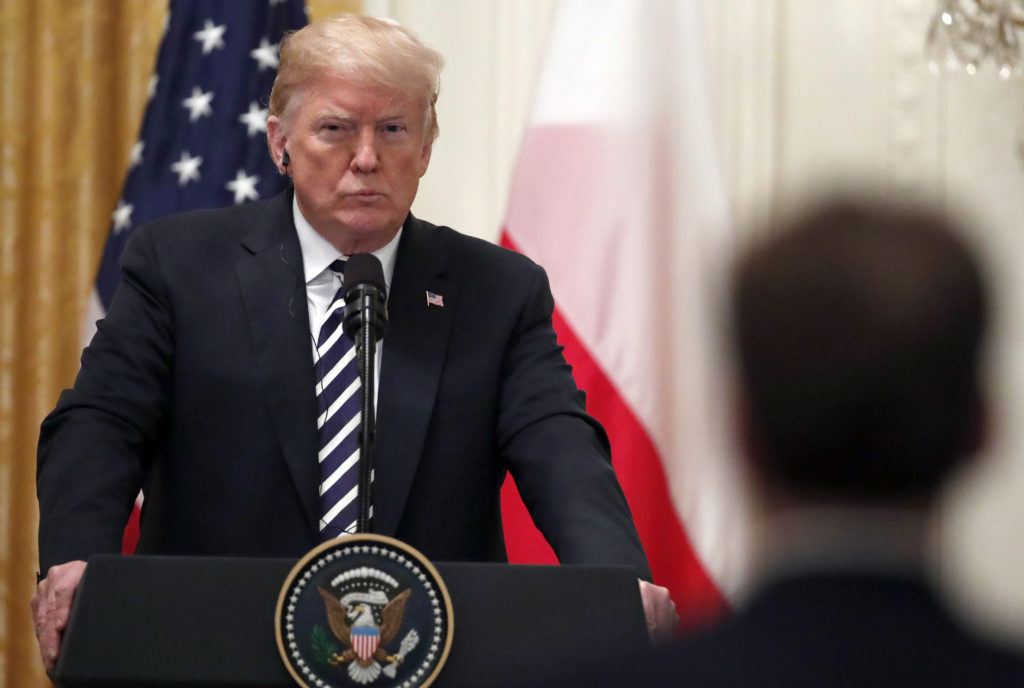
President Donald Trump said he is postponing his State of the Union address until the partial government shutdown ends, yielding after a weeklong showdown with House Speaker Nancy Pelosi. Following a high-stakes game of dare and double-dare, Trump conceded Wednesday night that “no venue that can compete with the history, tradition and importance of the House Chamber.” He said he was not looking for an alternate option after Pelosi served notice earlier in the day that he wouldn’t be allowed to deliver the address to a joint session of Congress next week. Pelosi had taken the step after Trump said he planned to show up in spite of Democratic objections to the speech taking place with large swaths of the government shut down. Denied that grand venue, Trump promised to come up with some sort of alternative event. The White House scrambled to find a site matching the gravitas of the traditional address from the rostrum of the House to lawmakers from both parties, Supreme Court justices, invited guests and a television audience of millions. “As the Shutdown was going on, Nancy Pelosi asked me to give the State of the Union Address. I agreed,” Trump tweeted shortly after 11 p.m. EST. “She then changed her mind because of the Shutdown, suggesting a later date. This is her prerogative – I will do the Address when the Shutdown is over.” Pelosi said Thursday that she was thankful the president recognized it was “inappropriate” to hold the State of the Union during the government shutdown, adding “thank goodness we put that matter to rest.” Fireworks over the speech shot back and forth between the Capitol and the White House as the monthlong partial government shutdown showed no signs of ending and about 800,000 federal workers faced the prospect of going without their second paycheck in a row come Friday. Pelosi told Trump the House wouldn’t approve a resolution allowing him to address Congress until the shutdown ended. Trump shot back that Pelosi was afraid of hearing the truth. “I think that’s a great blotch on the incredible country that we all love,” Trump said earlier Wednesday. “It’s a great, great horrible mark.” The drama surrounding the State of the Union address began last week when Pelosi asked Trump to make other plans but stopped short of denying him the chamber for his address. Trump called her bluff Wednesday in a letter, saying he intended to come anyway. “It would be so very sad for our Country if the State of the Union were not delivered on time, on schedule, and very importantly, on location,” he wrote. Pelosi quickly squelched the speech, writing back that the House “will not consider a concurrent resolution authorizing the President’s State of the Union address in the House Chamber until government has opened.” The president cannot speak in front of a joint session of Congress without both chambers’ explicit permission. A resolution needs to be approved by both chambers specifying the date and time for receiving an address from the president. The gamesmanship unfolded as the Senate prepared to vote this week on dueling proposals on the shutdown. A Republican one would give Trump money for the wall while one from Democrats would re-open government through Feb. 8, with no wall money, giving bargainers time to talk about it. Both proposals were likely to fail to reach the 60-vote threshold needed in the Senate, where Republicans hold a 53-47 majority. As well, House Democrats were putting forward a new proposal, aiming to lure Trump away from his demand for a border wall by offering billions of new dollars for other border security measures. The Constitution states only that the president “shall from time to time give to the Congress Information of the State of the Union,” meaning the president can speak anywhere he chooses or give his update in writing. The address has been delayed before. Ronald Reagan’s 1986 State of the Union address was postponed after the Challenger space shuttle exploded in flight on Jan. 28 of that year. But there is no precedent for a State of the Union invitation being rescinded. Presidents Harry Truman, Dwight Eisenhower and Jimmy Carter issued their final messages in print. As Eisenhower recovered from a heart attack in 1956, he prepared a seven-minute, filmed summary of the message from his retreat in Key West, Florida, that was broadcast nationwide. Richard Nixon sent a printed message in 1973; his staff said an oral message would have come too soon after his second inaugural address. White House officials had been working on a backup plan to have Trump give the speech somewhere else if Democrats blocked access to the House chamber. Nevertheless, they were rattled by Pelosi’s move Wednesday and expressed concern it would further sour shutdown negotiations. Pelosi said that when she extended her Jan. 3 invitation to Trump to deliver the State of the Union address on Jan. 29, there was no thought that the government would still be shut down. She wrote Wednesday: “I look forward to welcoming you to the House on a mutually agreeable date for this address when government has been opened.” Moments after her letter became public, Trump told reporters he wasn’t surprised by Pelosi’s action. Democrats have become “radicalized,” he claimed. He expanded on those sentiments during a subsequent event at the White House, calling the cancellation a “disgrace” and asserting that Pelosi didn’t want to hear the truth about the need for better border security. The White House and Democratic lawmakers have been accusing one another of pettiness since Pelosi raised doubts about the speech. Trump followed up by revoking her use of a military plane for a congressional delegation visit to Afghanistan. Republished with permission from the Associated Press.


